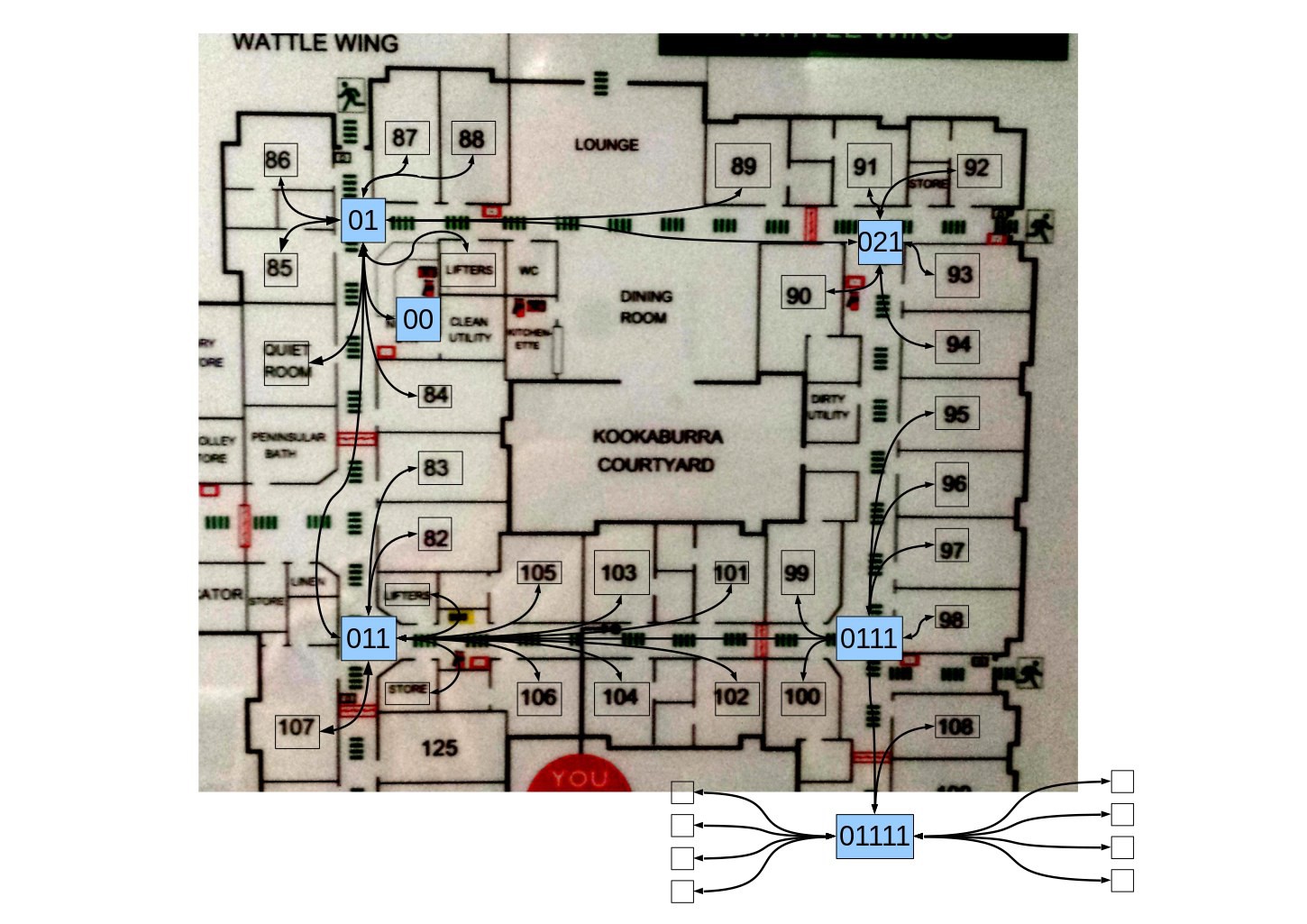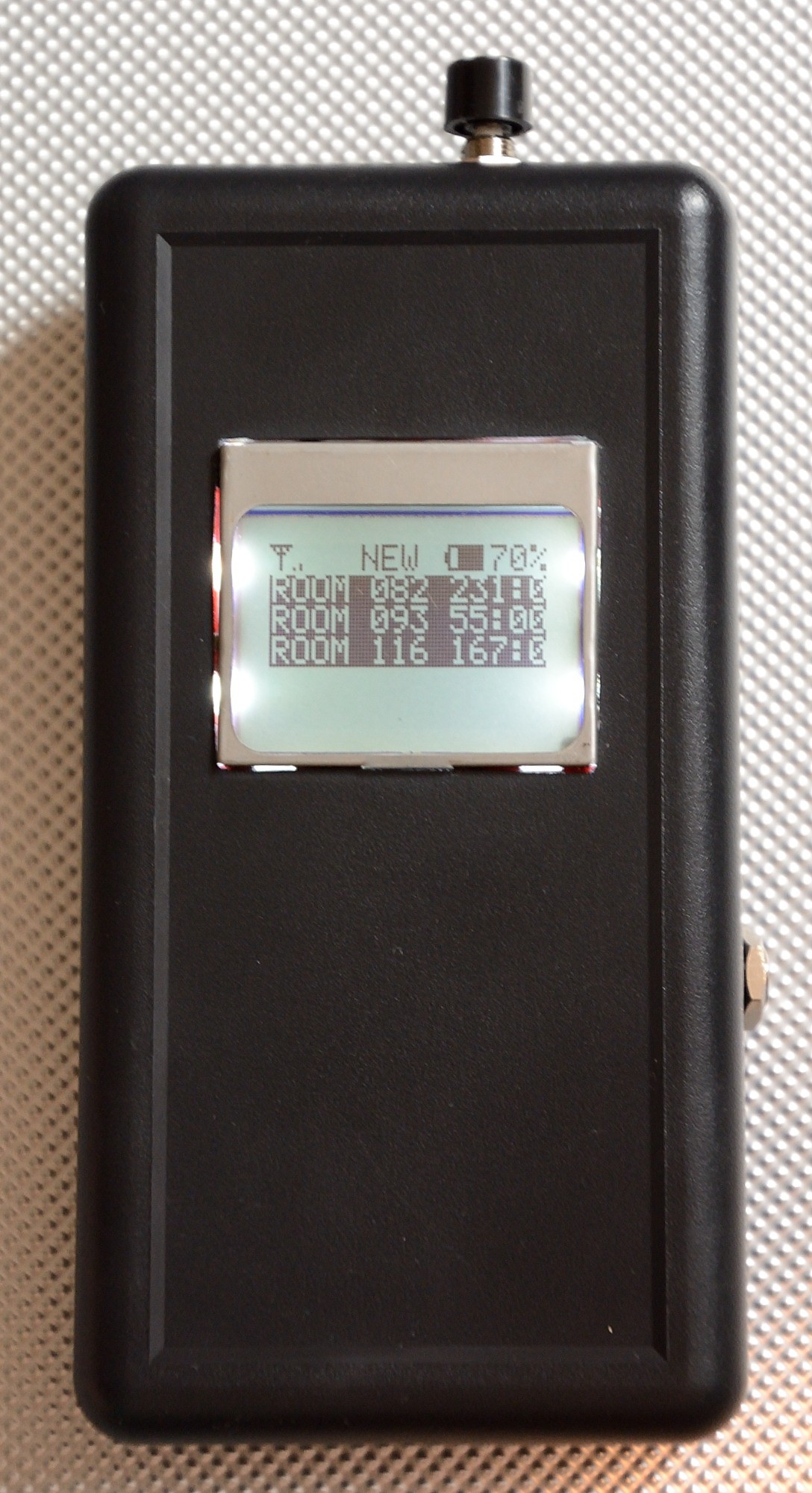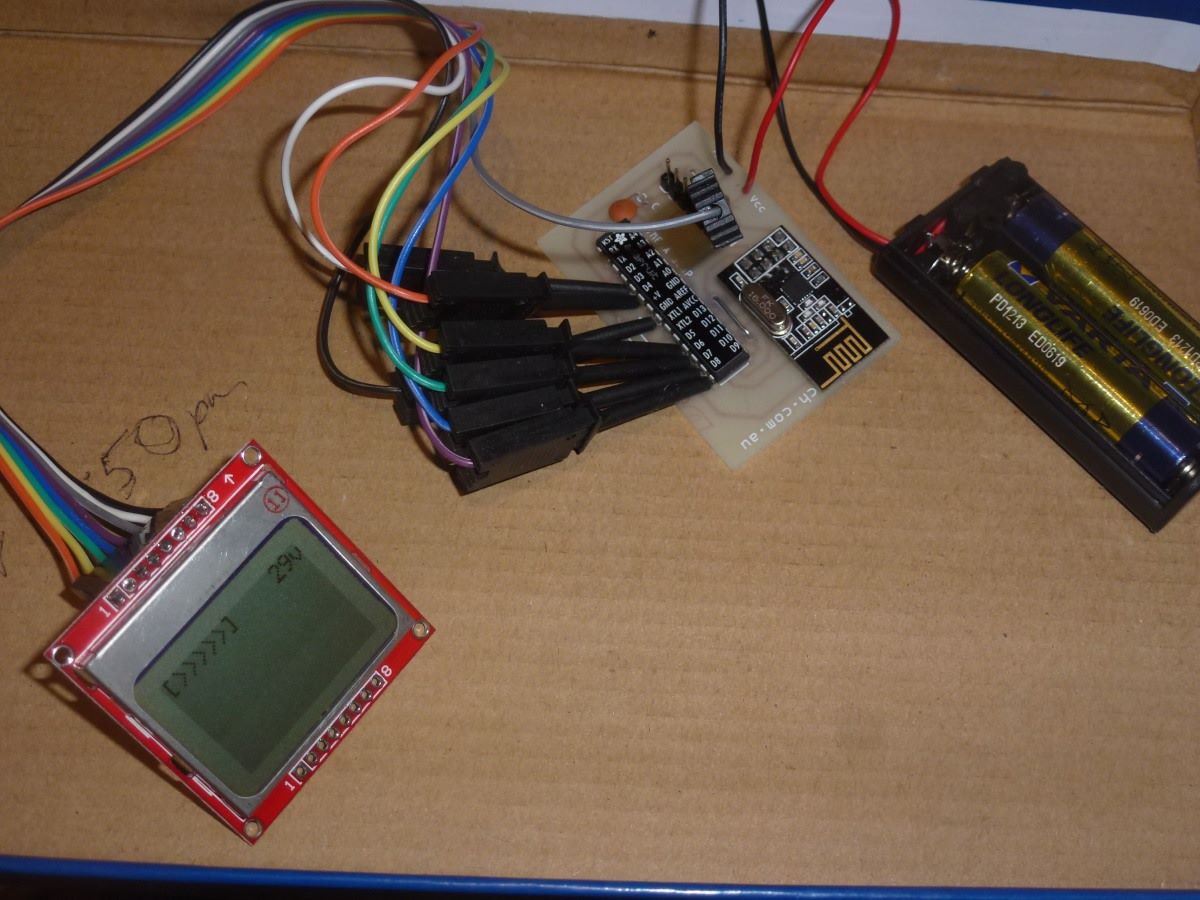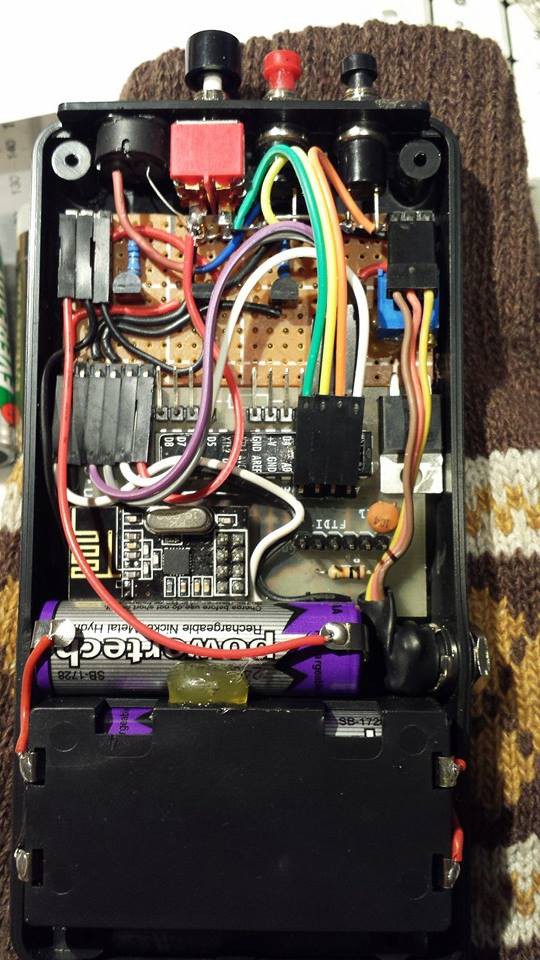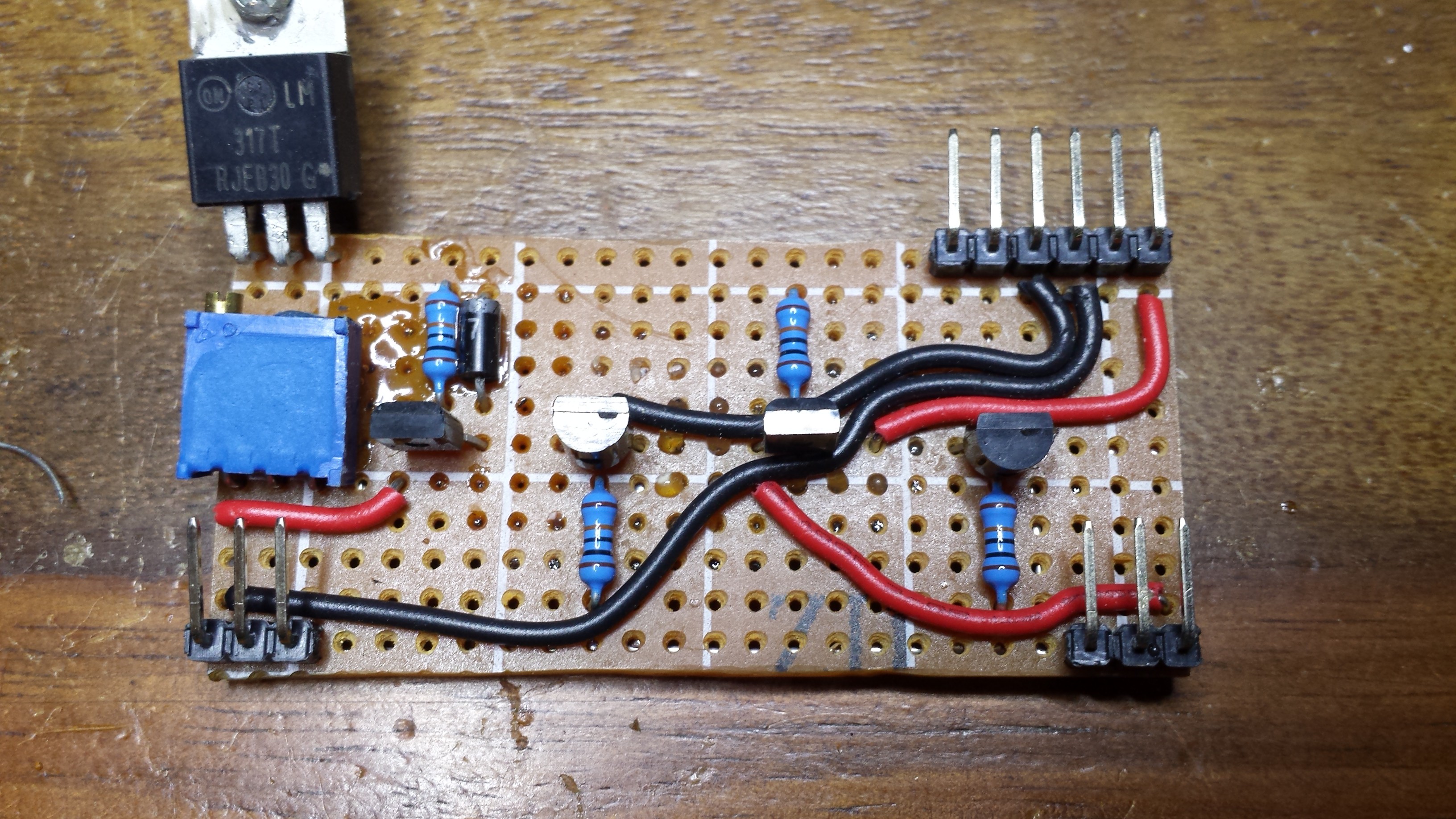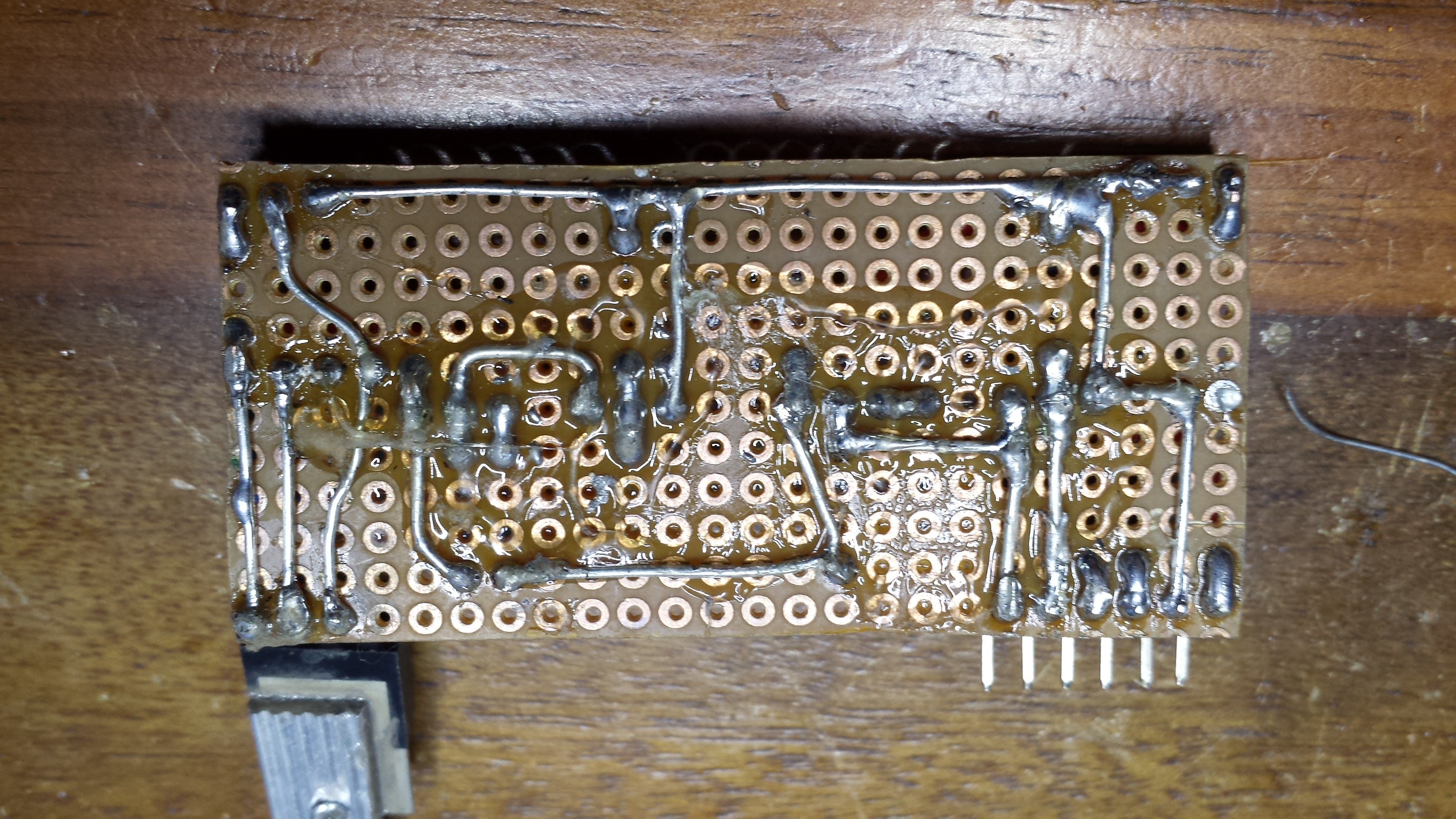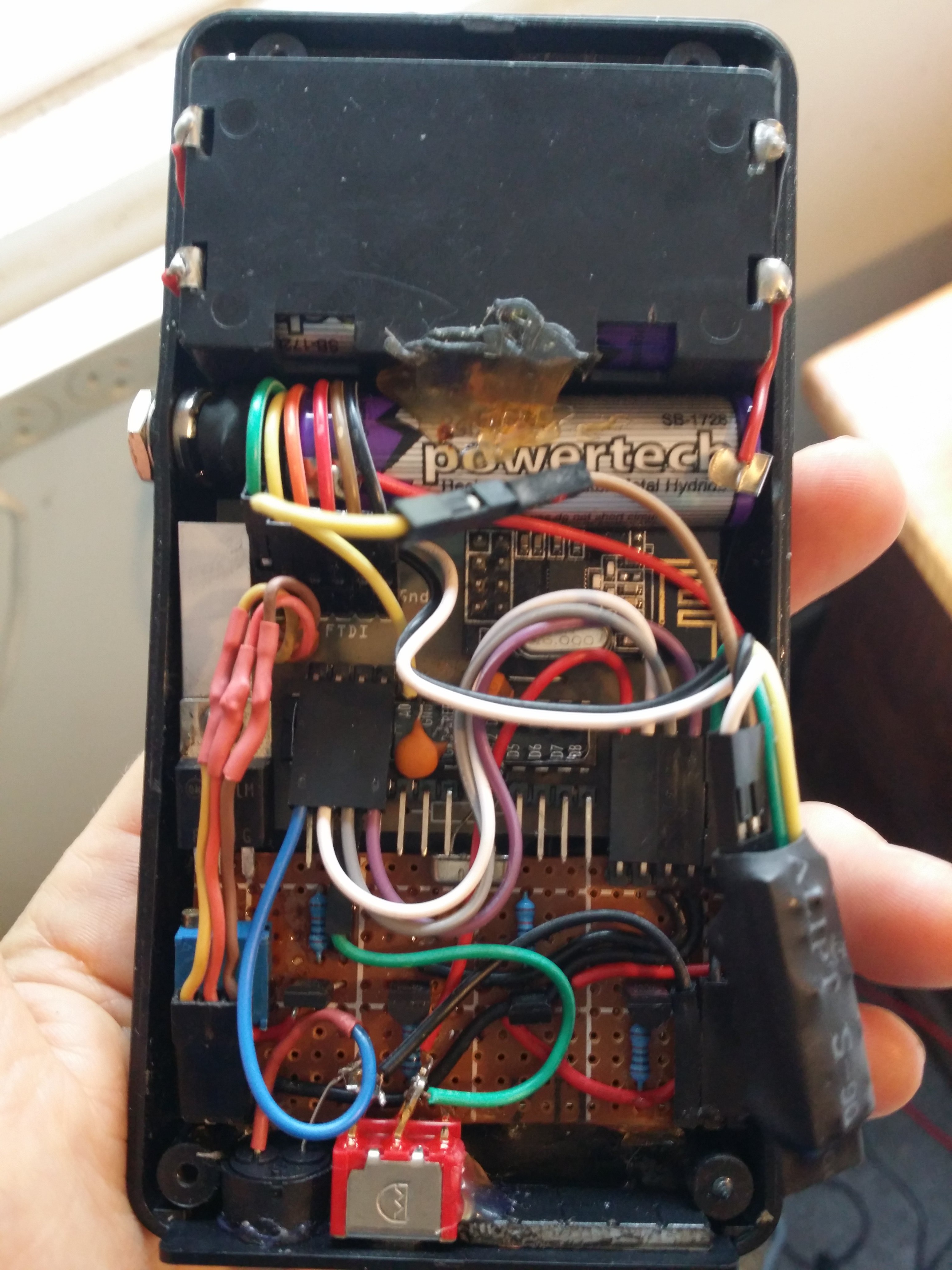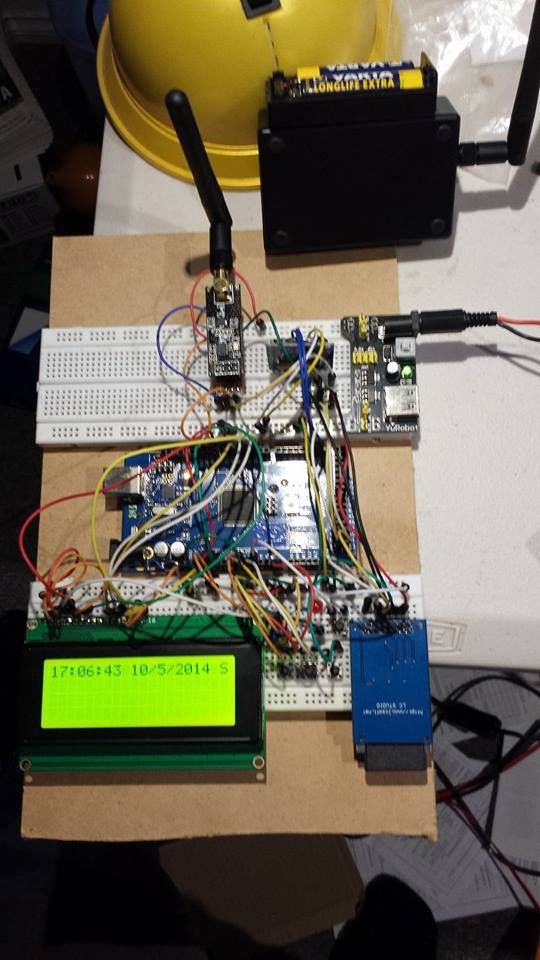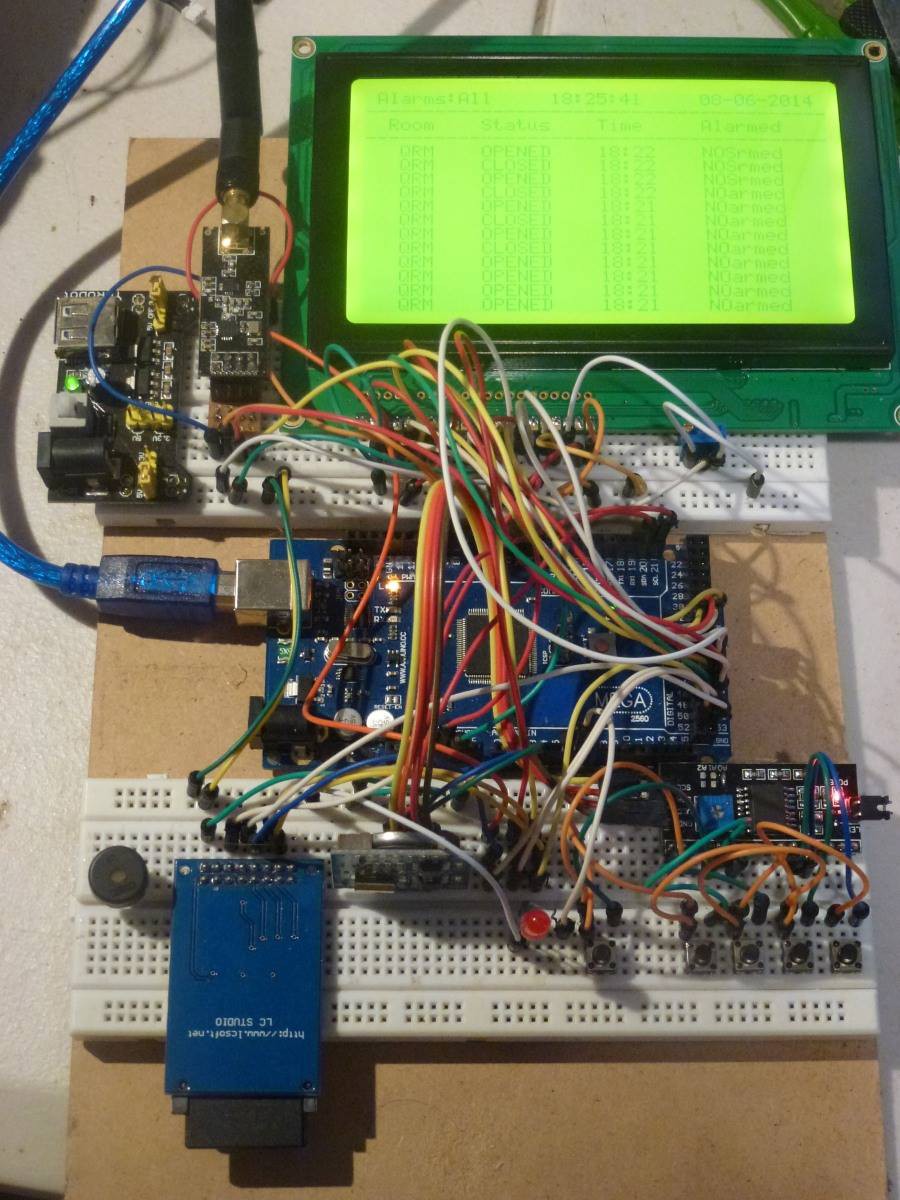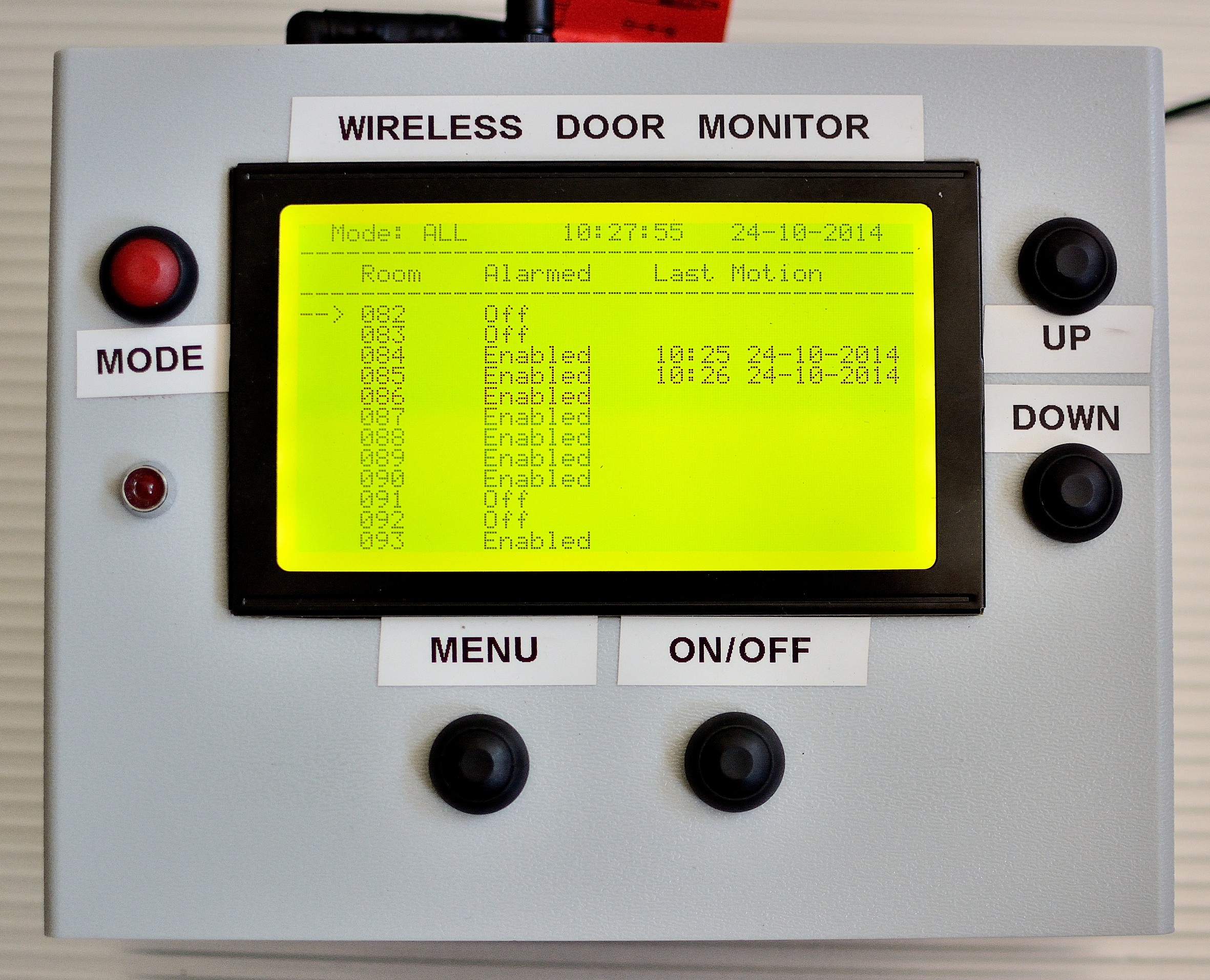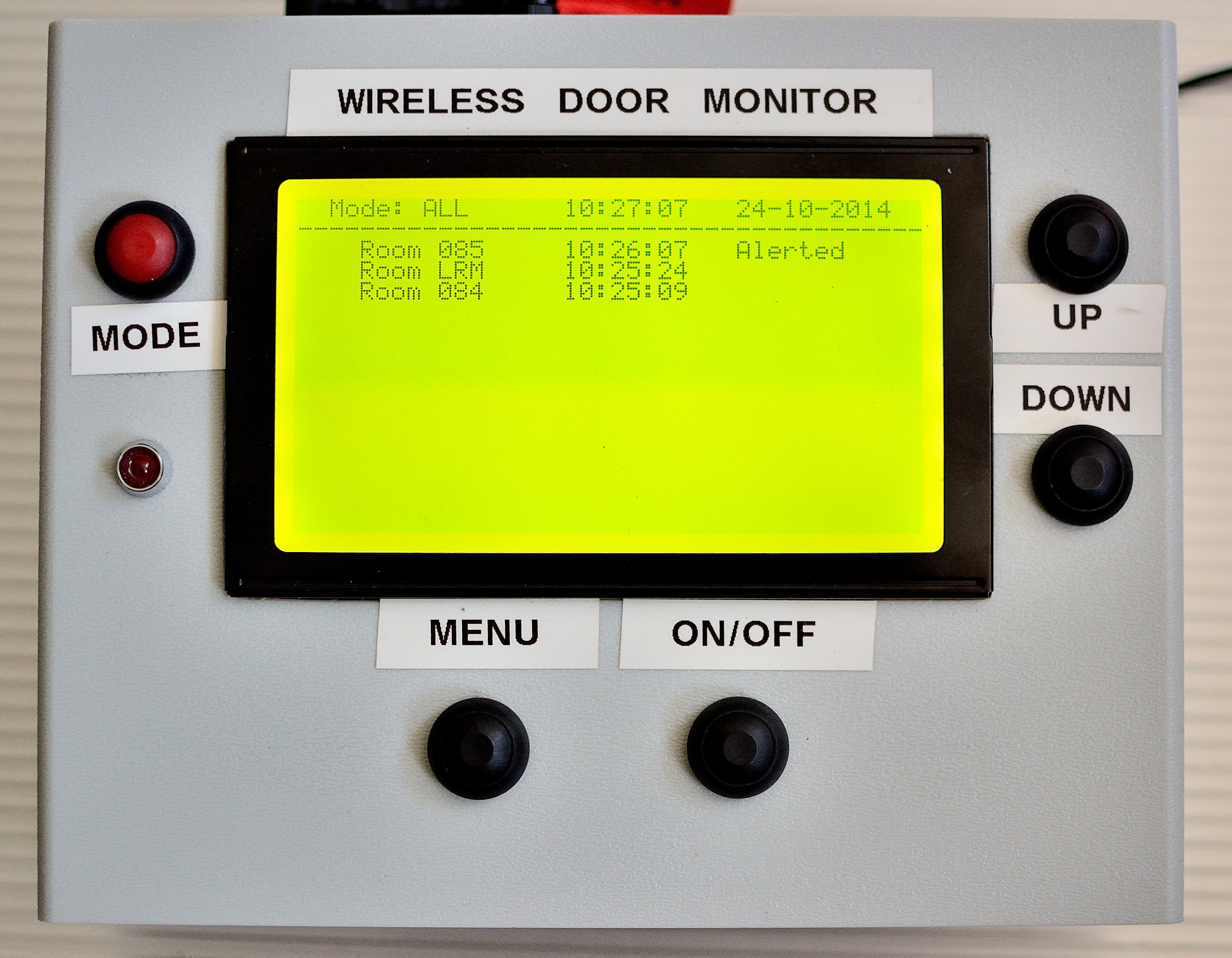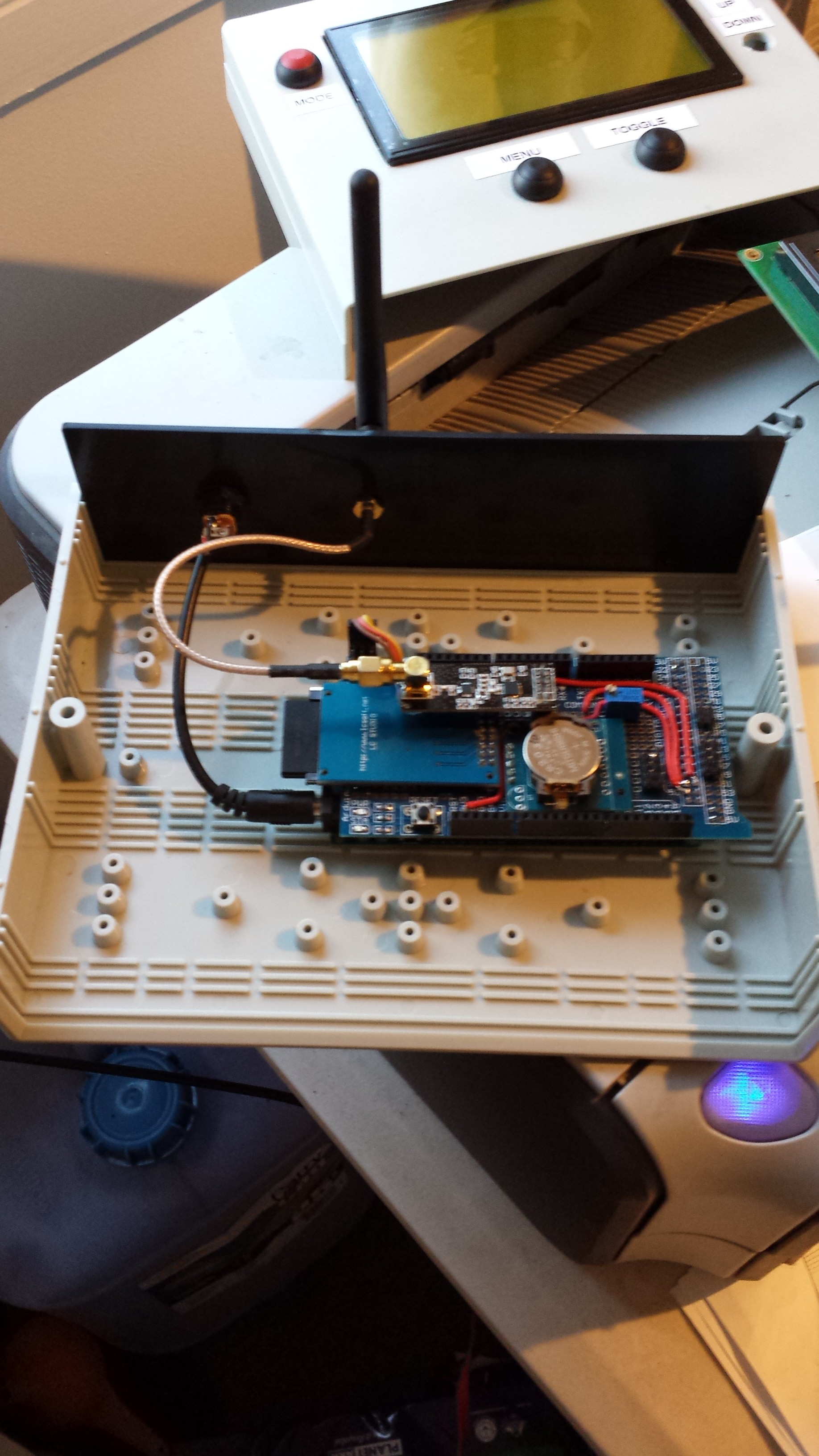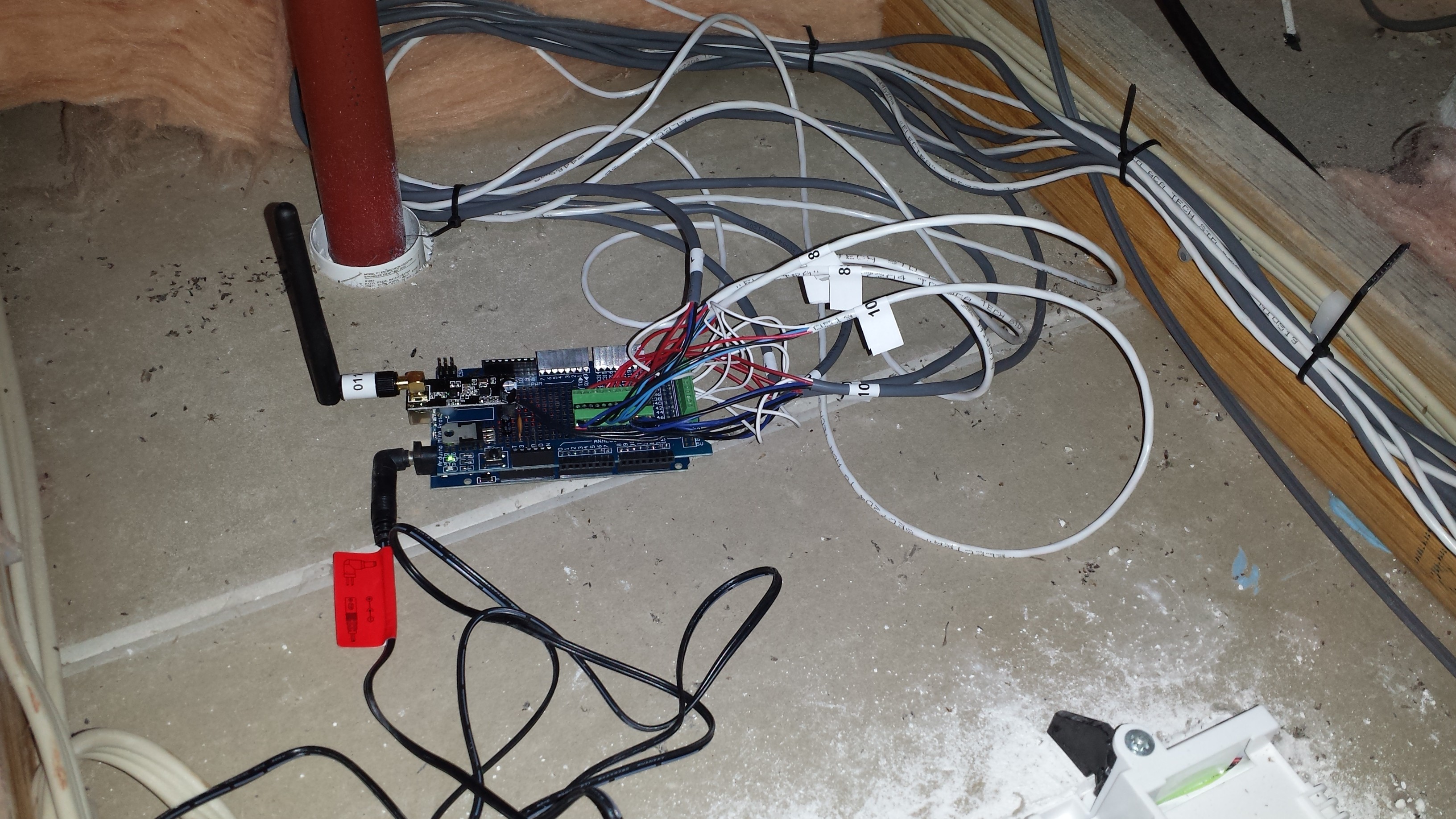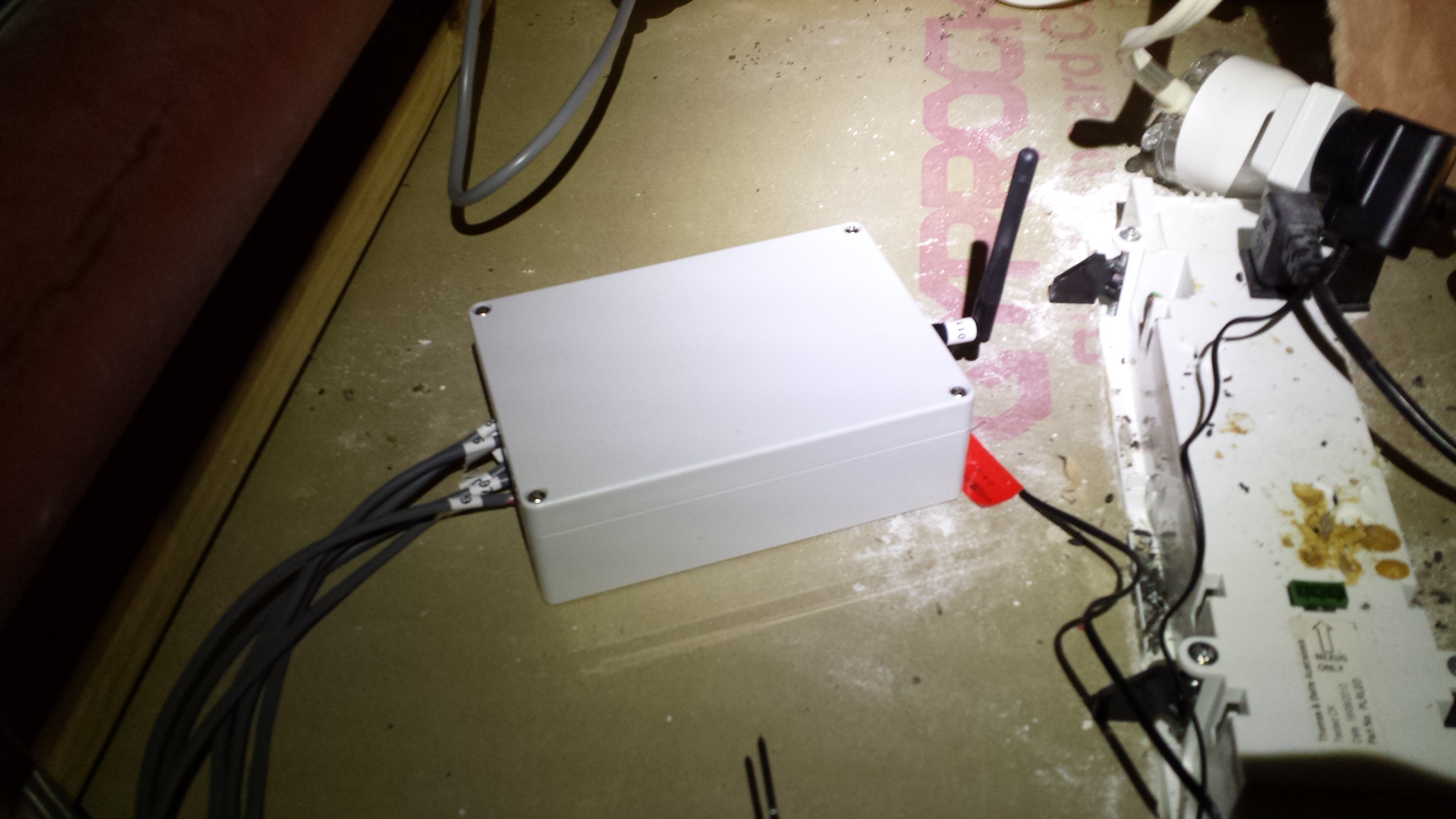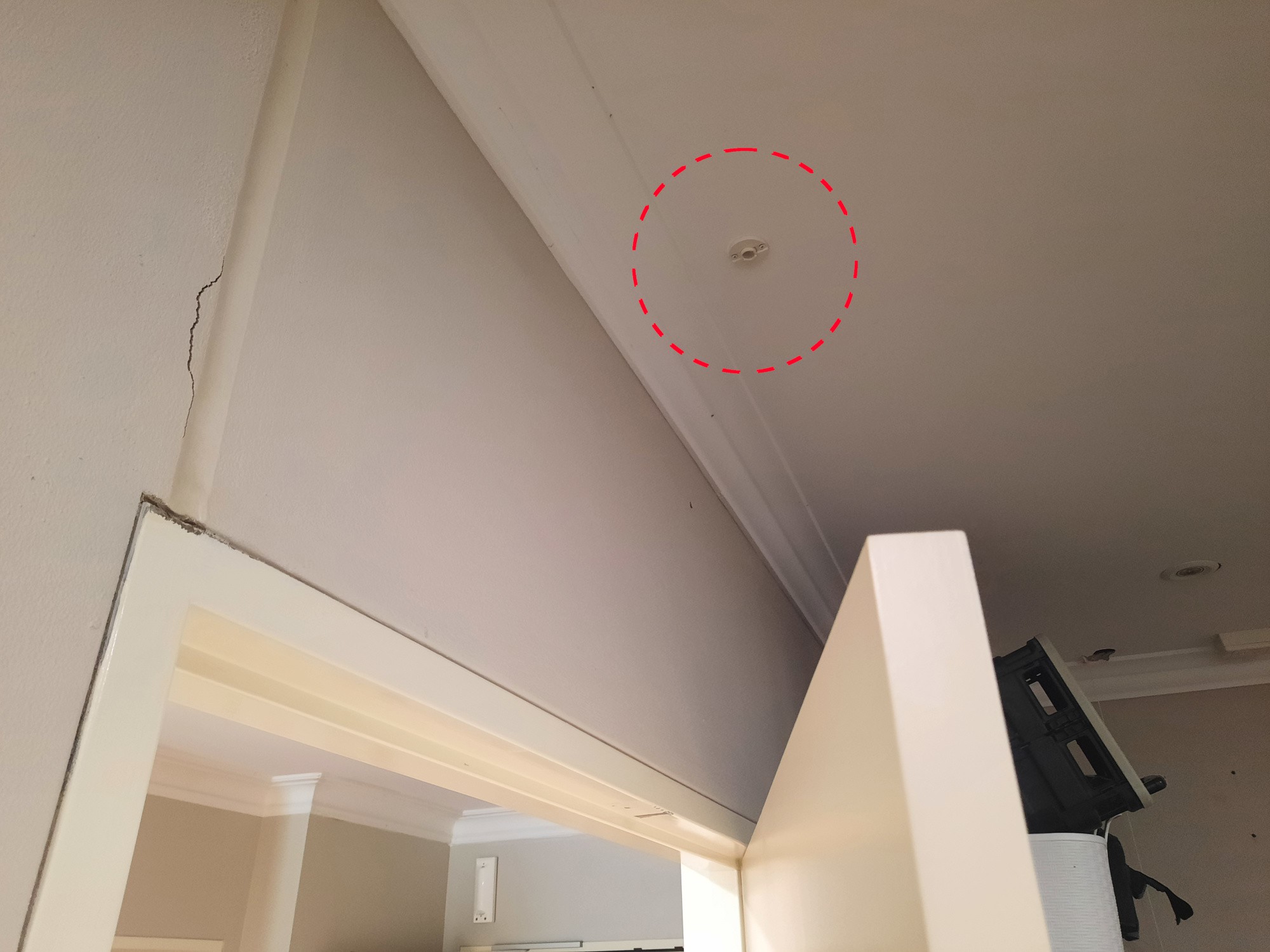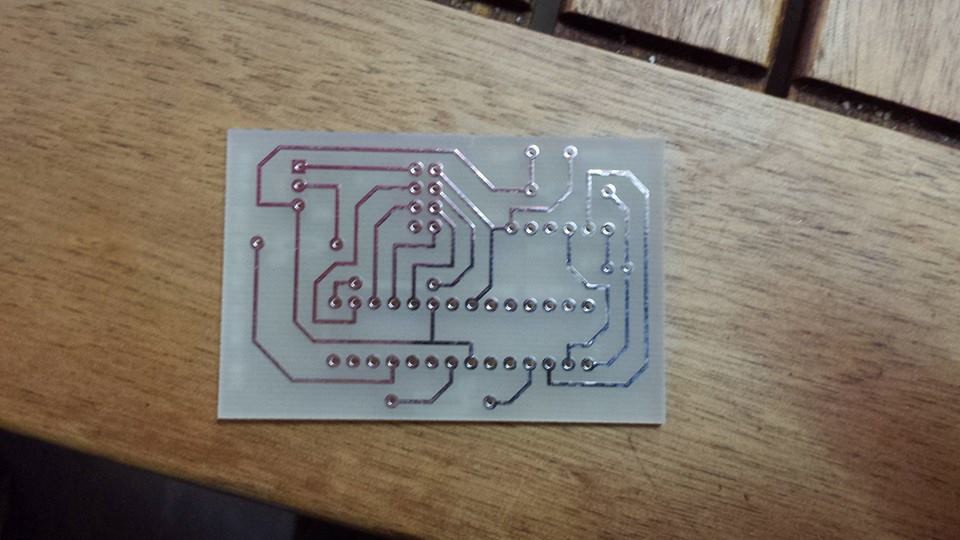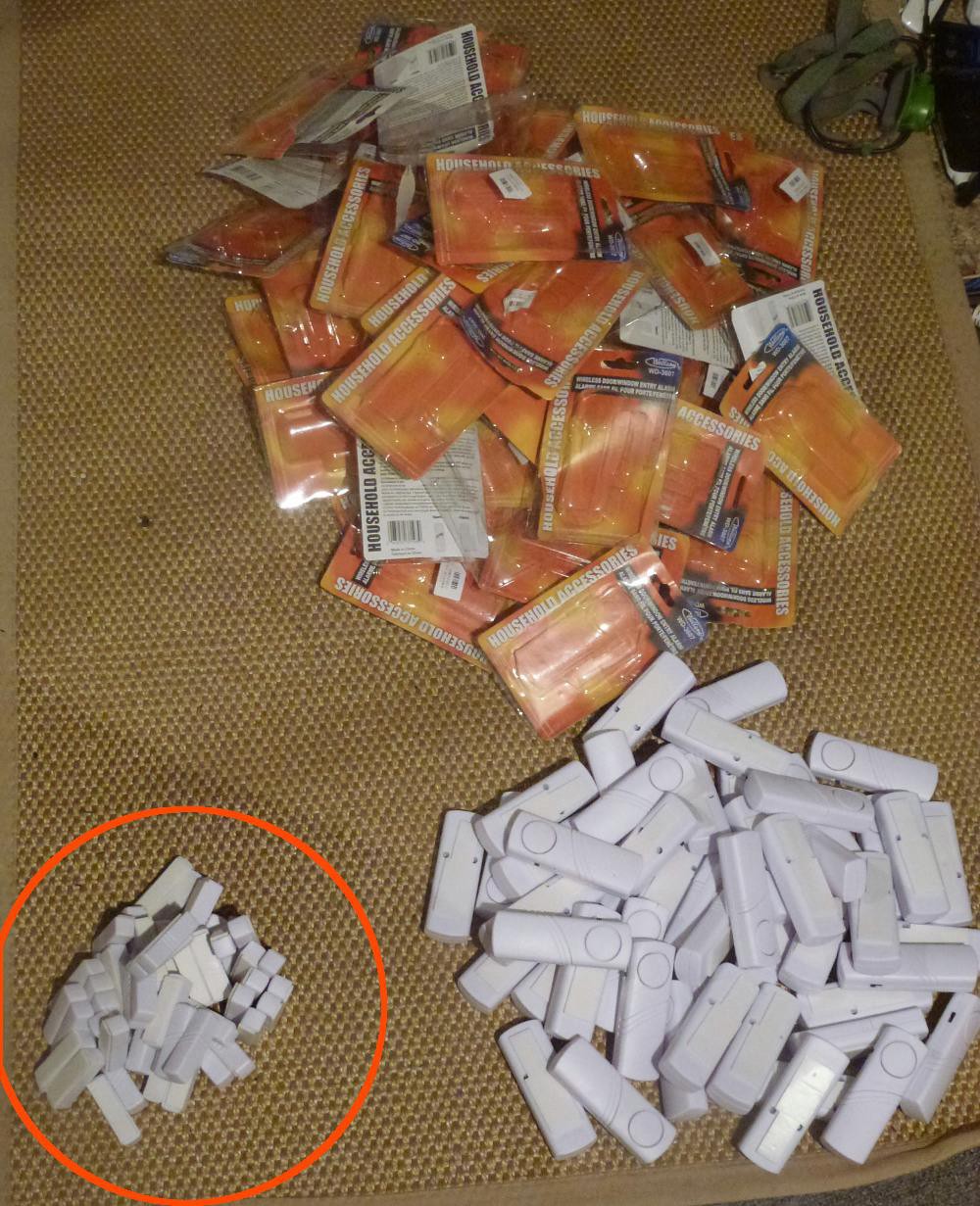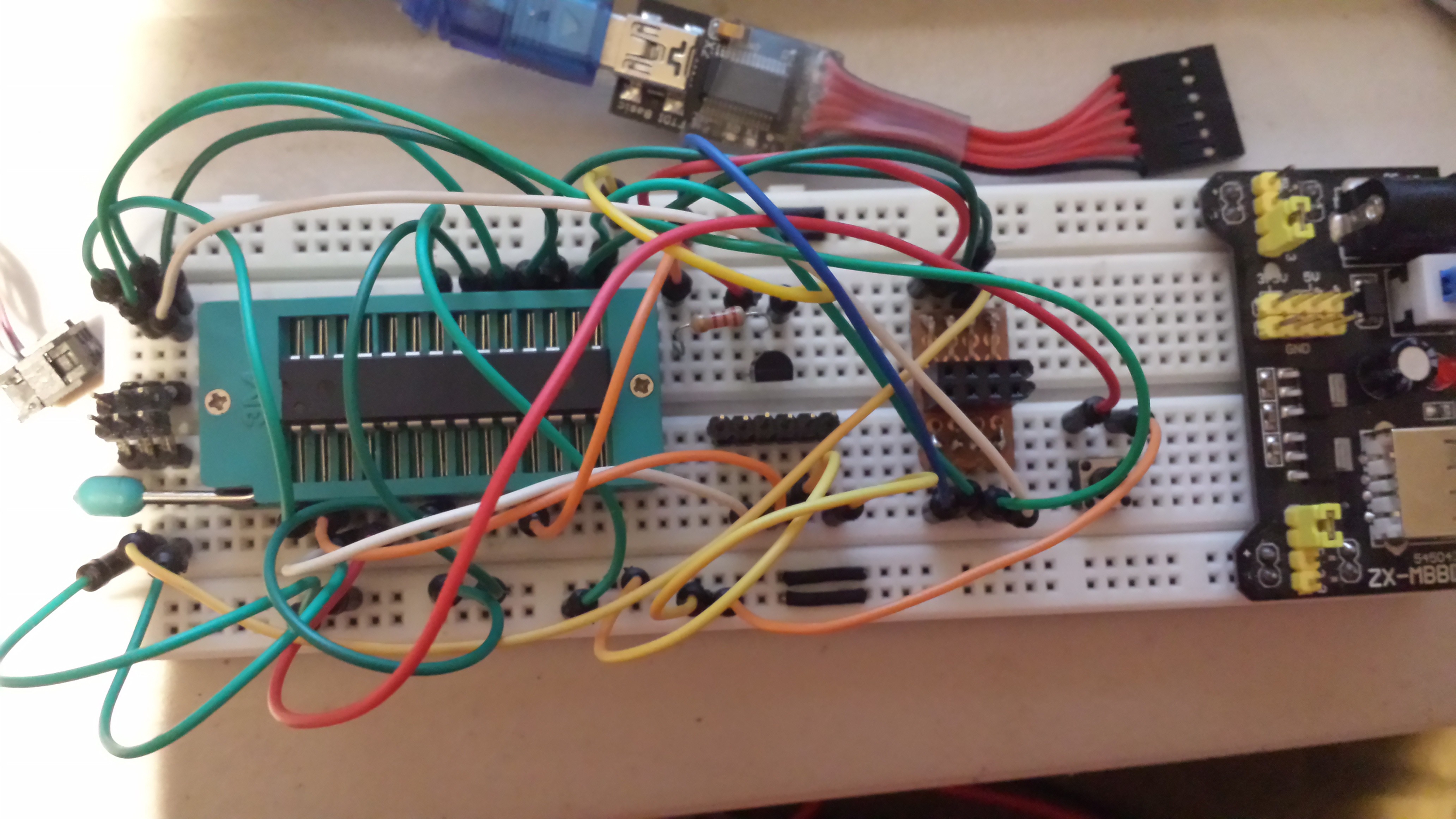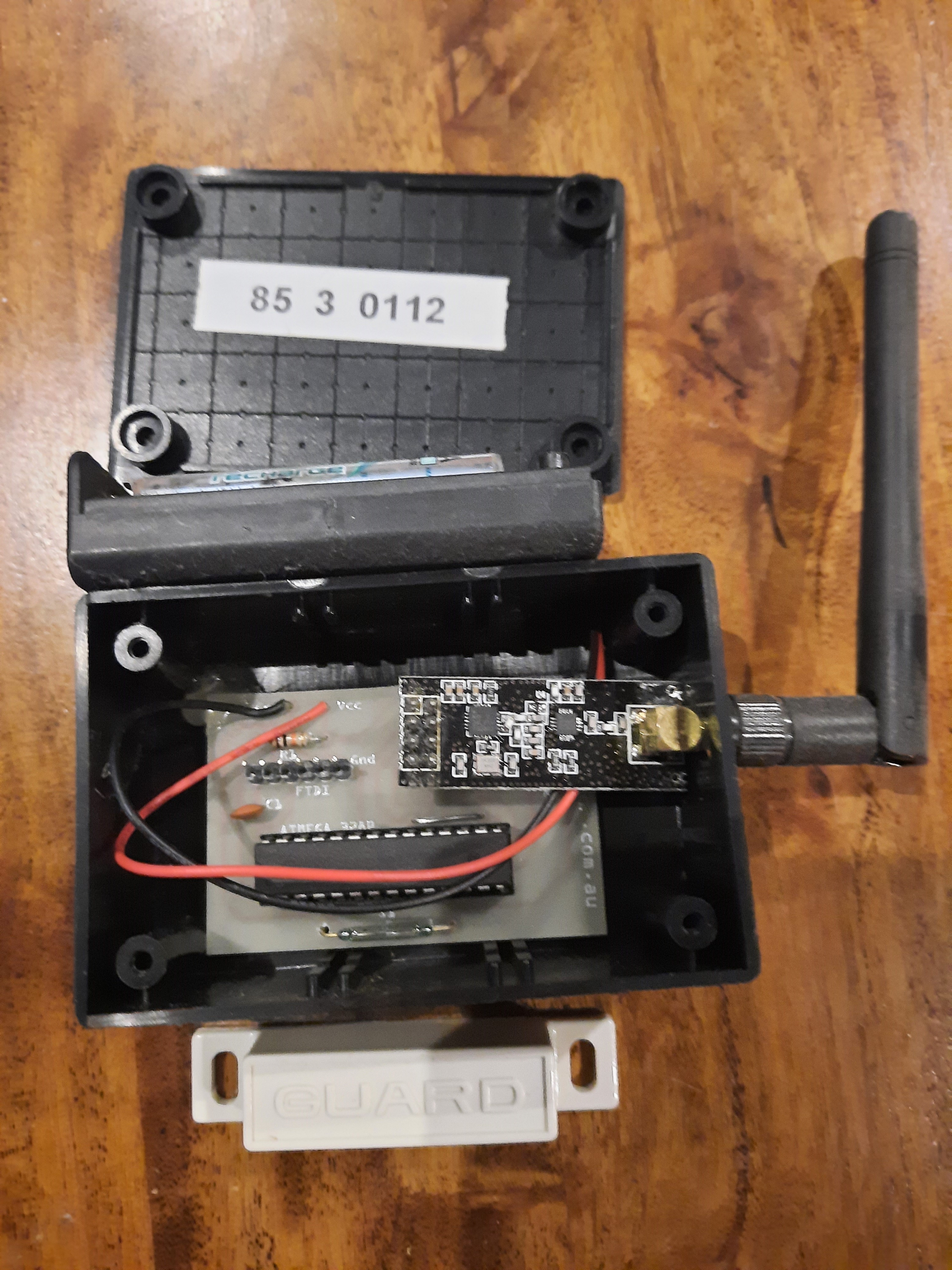-
Alert logic change.
05/28/2023 at 20:48 • 0 commentsThe most recent change we made was to the alarm (buzzer/mobile) logic:
instead of having individual rooms being able to be set between, no alarm or alarm, and a system wide: All alarm, custom, or none setting.
Now the system wide option is set by time rather than user, and switches to All between 9PM and 7AM and to custom outside of that (day time). The user can then set on or off (alarm or not) which takes into effect during the day if needed.
-
Project topology/layout.
05/14/2023 at 00:58 • 0 commentsHere is a map I made laying out which rooms are wired to which hubs (blue boxes) with their radio ids. 00 is the base unit on the nurses desk, while all the others are in the roof. Data is passed from one roof node to the next to its destination.
![]()
A map of the connectivity -
Portable receiver development
05/13/2023 at 07:37 • 0 commentsThis is a portable display of the new events, broadcast via the NRF24 network from the base unit. Needed for staff when they are not at the nurses station. It runs off 3x AA NIMH rechargeable batteries, that are managed by a custom built bms circuit that handles charging and low voltage cutout. The arduino monitors the battery voltage, and uses the 'bms' circuit to do the switching, such as disconnecting charge supply after set time and turn itself of if voltage gets too low.
These units use a lower power NRF24 module with amplifier, as they only receive and run off battery.Run time between charges is 2-4 days.
Portable receiver showing new events ![]()
an early development version of the mobile unit ![]()
inside an early version of the portable unit ![]()
my custom nimh bms (battery management system) featuring adjustable constant current charge rate and low voltage disconnect ![]()
not pretty but it works ![]()
having to add a 3v3 reg, (bottom right) as the charging voltage of the 3x NIMH batteries was a bit much for the NRF24 module -
Base unit development
05/13/2023 at 07:21 • 0 commentsThis is the primary display and interpreter of all the collected data, featuring:
- Arduino Mega (Atmega 2560)
- 240x128 pixel LCD
- Real-time clock with battery backup
- SD card module, for logging to csv
- NRF24L01 radio module
- Piezo buzzer and LED for alerts
A user can configure which doors are monitored/alarmed or not, there is also a event history that can be scrolled back through.
The RTC is used to record what time an event happens, there is a switch to toggle daylight savings time.The SD card is only accessible by dismantling the case, so discreetly records all events as well as "power outages", data is stored in csv format.
A buzzer and led flash if an alarm is triggered.
Alarmed events are broadcast back though the radio network to the portable units.![]()
A development version of the base, as well as one of the discontinued door nodes (top right) ![]()
close up of the development version of the base unit the configuration screen, for arming/disarming rooms event history screen ![]()
A view inside with front panel disconnected -
Roof hub development
05/13/2023 at 06:44 • 0 commentsInitially it was planned and tested to use several intermediate nrf24 hubs within the roof cavity to relay all the doorway wireless messages back to the base unit on the nurses desk.
After realising I didnt need to put a wireless node on each doorway, I still needed these relay hubs to have all the motion sensors wired up to. As due to the distances and physical firewalls that partition the roof cavity up into sections, I needed a wireless link between each group of wired together motion sensors to get the data back to the base.![]()
bare roof hub with door sensors wired up to it ![]()
enclosed roof hub -
Doorway node development and discontinuation...
05/13/2023 at 06:33 • 0 commentsMuch of the backstory to this part of the project can be read in the project details section: https://hackaday.io/project/191066-dementia-support-unit-bedroom-door-monitor#menu-details
Initially the plan was to have a magnetic reed sensor and arduino unit on each door frame.
Much time and resources were "wasted" (though much was learnt) developing, testing, purchasing materials only to realise it was not necessary... as it turned out there was already a superior solution installed ! I just never noticed it there, as it was a very discreet PIR roof mounted motion sensor.
![]()
PIR sensor circled
The plan for the nodes was to use an atmega 328 chip running low voltage brown out, on 2 AA batteries with deep sleep between the times the reed sensor triggered an interrupt pin. Along with an NRF24L01 module. It was estimated the batteries would last for 6-12 months depending on doorway activity, but something i didnt realise at the time was that the radio modules didnt like running at less than 3.3v (unlike the arduino which could go down to 1.8v) so 2xAA batteries would not have been enough....But before finding this out I designed and had printed my very first pcb:
![]()
my first ever pcb, for a battery powered atmel 328 As well as purchase all the components needed to make up about 30 of these:
![]()
jumping the gun i bought these for the magnets, but they turned out o be too weak I even bought all these window/door sirens off ebay, just for the magnets, as it turns out reed sensor need a particular magnet polarisation, not the normal type you get from a fridge magnet. But it turned out these magnets were inferior strength for what i needed and couldnt reliably bridge the gap i needed between door and doorway...
![]()
a prototype chip flasher, used for 'burning' the 328 chips ![]()
example of finished door node
DSU Bedroom Door Monitor
An Arduino based alert and logging system, including portable receivers for tracking 40 room doorway motion sensors in an aged care home.
 hayden
hayden